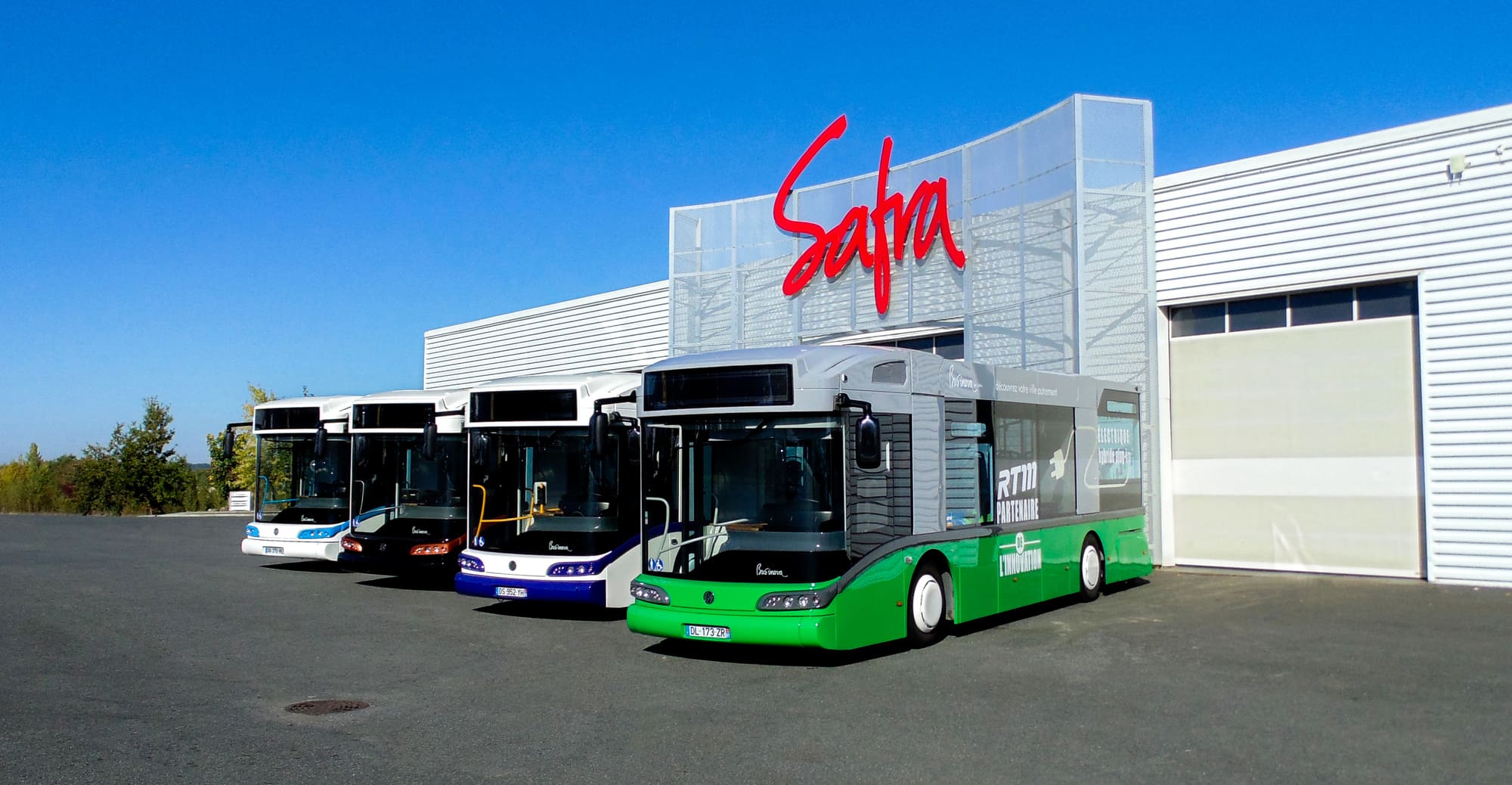Bus manufacturer SAFRA has just won a tender launched at the end of 2017 by the Syndicat Mixte des Transports Artois-Gohelle, for the supply of 6 hydrogen buses. The SMTAG’s choice fell on the Businova, a bus with an attractive design that perfectly meets the new directives of the Energy Transition Law. This market offers good prospects for the Albi-based company, which is contributing to its growth, already well underway thanks to this project. The hydrogen version of the Businova will be equipped with a fuel cell manufactured by Michelin.

The contract won by SAFRA is the result of a public tender launched by the Syndicat Mixte des Transport Artois-Gohelle for the supply of 6 standard low-floor buses with fuel cell electric motors. The SMTAG’s perimeter covers 150 municipalities, including the agglomerations of Lens – Liévin, Hénin – Carvin and Béthune – Bruay – Artois-Lys-Romane, making it the 6th largest transport area in France. This success reinforces SAFRA’s decision to develop its range towards zero emission vehicles, including the hydrogen version. By launching the hydrogen range, SAFRA becomes the first French manufacturer of hydrogen buses.
From its inception, the Businova was designed to adapt to technological evolutions, its architecture allowing the vehicle to evolve towards different motorization modes. This is what has mobilized the Businova program teams over the last few months, to develop a complete range with different sizes (9.5m, 10.5m and 12m) and several engines. Indeed, thanks to its architecture composed of a passenger chassis and its energy pack, as well as the configuration of the side lockers, the Businova has the capacity to integrate different types of motorization, from pure electric to H2 fuel cells, without any major technical constraints.
The Businova is marketed in a very low emission mode with its “rechargeable hybrid electric” range offered with a Diesel (Euro VI) or CNG extender, which perfectly meets the requirements of group 1 of the decree of the energy transition law for green growth. It is also available in a zero-emission version, in 100% electric with a slow recharging system in the evening at the depot, or a fast recharging system using a reverse pantograph, but also in a hydrogen version. It is on these aspects of operating agility and vehicle scalability that the Businova keeps a real lead over its competitors.
From the very beginning of the Businova project, SAFRA has been very interested in hydrogen technology, which makes it possible to maintain a reduced battery capacity by providing additional energy. The Businova H2 is based on the original architecture developed by SAFRA since 2011 and approved. By keeping the entire architecture of the vehicle (passenger compartment, chassis, axle, mechanical parts, batteries, electrical architecture) SAFRA has adapted a hydrogen system to the initial 250 kW electric drive train, powered by a 132 kWh lithium-ion battery pack. The fuel cell is supplied by Michelin, and the system integrates a storage of 28 kg of hydrogen at 350 bars, which allows a range of more than 300 kms per day. The Michelin hydrogen module is built around a 30 kW fuel cell. Michelin’s fuel cell technology can cover a range of applications from 5 to 100 kW. Significant integration work has been carried out to obtain a reduced weight and a very compact volume, in order to facilitate integration in the vehicle.
The new range proposed today by SAFRA is a perfect response to the needs of the French market for zero-emission vehicles, in line with the latest directives of the French Energy Transition Law, and also at the international level, with European projects related to low-carbon mobility solutions.

